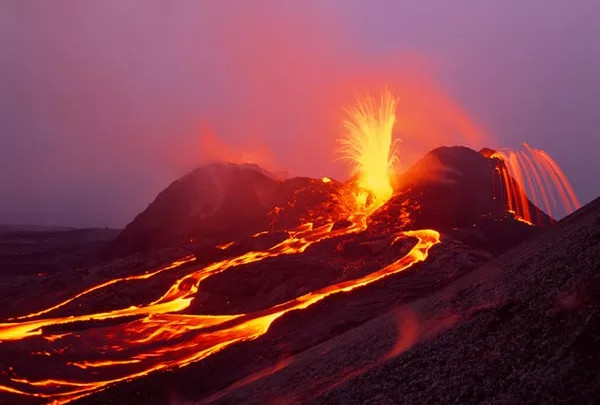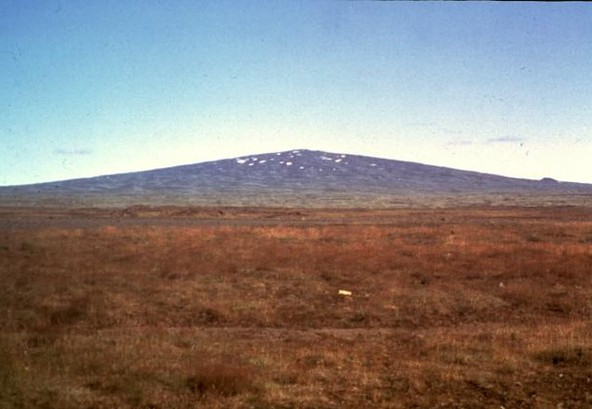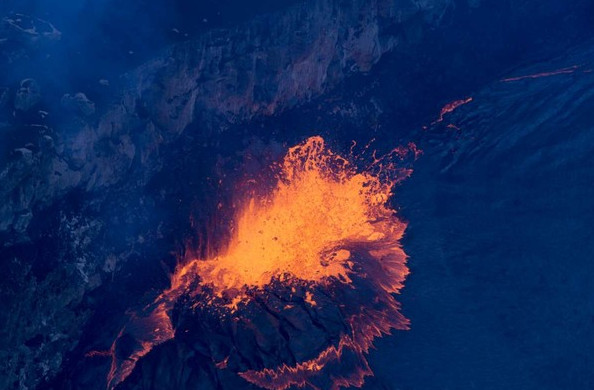Well, why not? Simply because it’s not possible…
Why Can’t We Dispose of Trash by Throwing It into Volcanoes?
In the United States, it is estimated that over 250 million tons of waste are generated each year, which is equivalent to 20 kg per person per day. In Vietnam, statistics show that each citizen is responsible for 200 kg of waste per year.
To manage waste, countries around the world typically build incinerators. However, this raises the question: Why not just throw all the trash into a volcano for convenience? Isn’t that a natural incinerator?
It’s true that if we could dump tons of trash into a volcano, it would indeed be convenient, as it would save a lot of time and costs associated with burning. However, the simple answer is… it’s not possible.
The Costs Would Be Extremely High
Do you think the costs would decrease? Not at all, because first, if you want to throw trash into a volcano, you would need to find a “live” volcano – one that is still active.

If you want to throw trash into a volcano, you need to find a “live” volcano.
In reality, not many people live near such volcanoes. Therefore, transporting trash to the mouth of a volcano would take a lot of time, effort, fuel, and money compared to processing waste in incinerators.
Not Every Volcano is Suitable
Even if you live near a volcano, the fact remains that not every volcano is… usable.
Experts say that the most suitable type of volcano for waste disposal is the “shield volcano” – these are volcanoes with gentle slopes and low angles, where lava flows slowly through cracks in the Earth’s surface.

A type of shield volcano – shaped like an ancient warrior’s shield.

Kilauea Volcano – a shield volcano in Hawaii (USA).
However, most of the volcanoes on Earth are “stratovolcanoes” – which are tall conical volcanoes. These types of volcanoes tend to “explode” unexpectedly when the pressure of hot gases and lava inside becomes too high. In short, if you throw trash into such a “sensitive” volcano, you would… be in serious danger.
Throwing Trash into a Volcano Could Cause Disasters
But even if you meet the conditions: living near a shield volcano, like Kilauea in Hawaii, throwing trash into a volcano is still extremely dangerous.
First, there’s the issue of toxic volcanic gases – which include various gases formed when burning sulfur, such as H2S, SO2… enough to send a person to meet their maker if inhaled in excess within just one minute.
Moreover, there’s another very important reason that you should check out in the video below – about throwing a bag of trash into lava in Hawaii.
You can see that when a normal temperature bag of trash falls into lava, it can cause quite a violent eruption. And the bag of trash in the video only weighed 30 kg.
Besides the temperature factor, there are many other reasons why we cannot dispose of waste using volcanoes. Second, although the temperature of 1100 degrees Celsius can melt many types of materials, including food waste, paper, plastic, glass, and some metals, lava still cannot overcome tougher materials like steel, nickel, and iron.
Third, currently, there are not many volcanoes in the world that have large enough and hot enough lava lakes for us to comfortably dump trash into. Among thousands of volcanoes, scientists have only discovered 8 volcanoes with active lava lakes, including Kilauea, Mount Erebus in Antarctica, and Mount Nyiragongo in the Democratic Republic of the Congo. Meanwhile, most of the currently active volcanoes have craters filled with rocks and cooled lava (like Mount St. Helens) or contain water (like Crater Lake).
Not to mention that the emissions from this process would go directly into the atmosphere, causing significant harm to the environment. In countries around the world, waste incineration systems always come with a system to capture and filter toxic gases before releasing them into the environment. Therefore, using volcanoes for waste incineration is not feasible.
Additionally, some people believe that volcanoes could be used to handle hazardous waste, including nuclear waste. Unfortunately, the average temperature of lava ranges from 700 to 1,250 degrees Celsius – still not hot enough to melt these types of waste (the melting point of Uranium is nearly 3,000 degrees Celsius).


















































